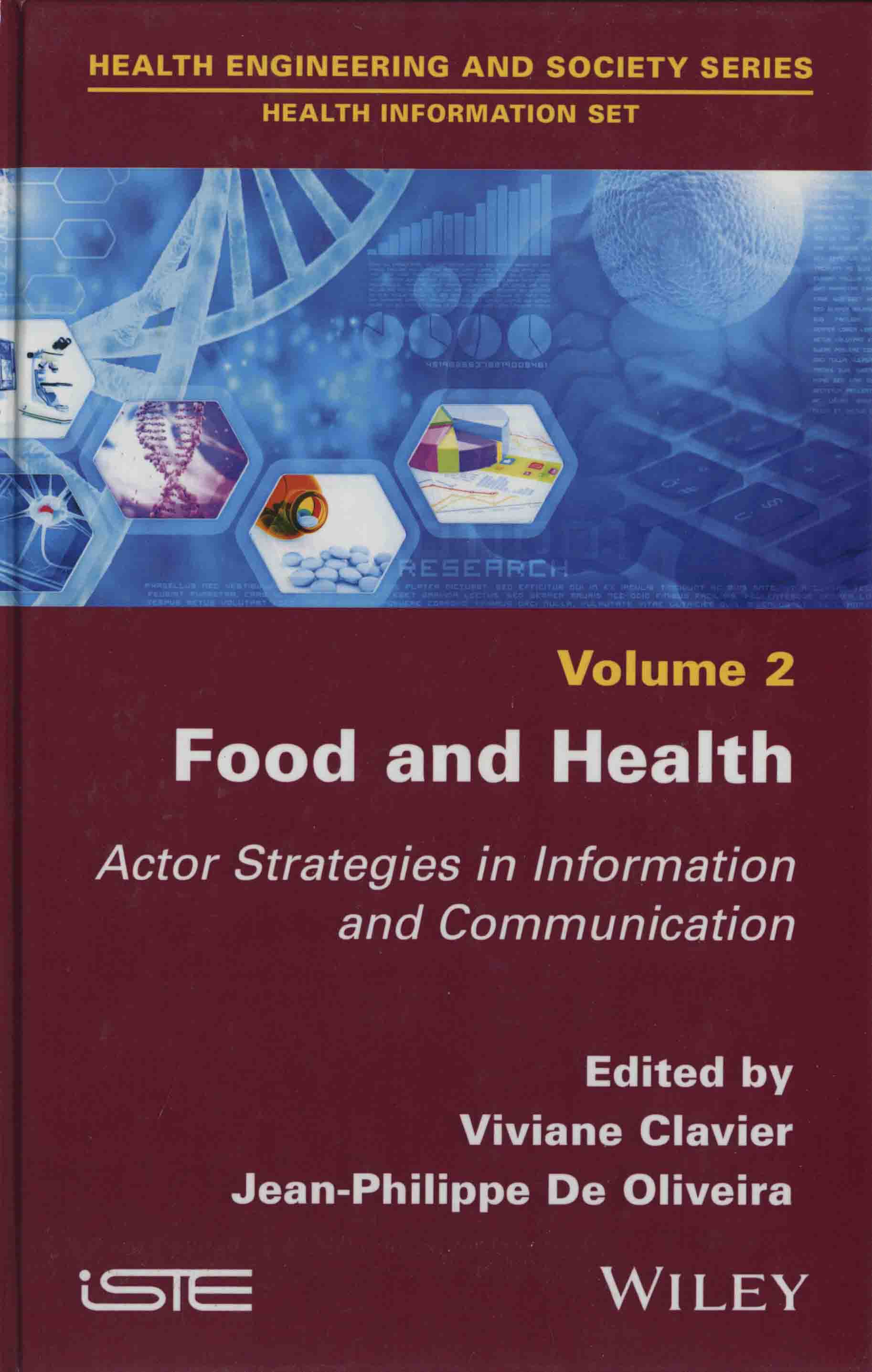 |
Food and health : actor strategies in information and communication / edited by Viviane Clavier, Jean-Philippe De Oliveira -- London, UK : John Wiley & Sons, Inc., 2019. – (61.115/F686) |
Contents
Preface
Introduction
Part 1. Public Space and Communication and Legitimization
Strategies
Chapter 1. Food as a Public Health Problem:
Convergences and Divergences of Public and Private Actor Games
1.1. Introduction
1.2. The "crisis of confidence" in the agri-food industries
1.3. Food as a public health issue
1.4. The PNNS: communication and actors' logic
1.5. Conclusion
1.6. References
Chapter 2. From Controversy to Media
Controversy: Analysis of Communication Strategies Concerning the Health Risk of
Growing Limousin Apples
2.1.
Introduction
2.2. The Limousin apple at the heart of a controversy
2.3. Unbalanced communication strategies
2.4. From controversy to media controversy
2.5. Conclusion
2.6. References
Chapter 3. Naming
"Antibiotic-Free" Meat: American Agri-Food Industry Communication
between Commitment and Guaranteeing Food Safety
3.1. Globalization of the antimicrobial resistance problem and
diversification of action programs
3.2. A variety of formulas to name "antibiotic-free" meat in
the United States
3.3.
Problematization, hypothesis and methodology
3.4. Stages of progressive communication
3.5. Emergence and use of the no antibiotics ever and no/without
medically important antibiotics formulas
3.6. Conclusion
3.7. Appendix. Methodological aspects: corpus building
3.8. References
Chapter 4. From Health Responsibility to
Ethical Responsibility: The Legitimization of New Vegetable Experts in France
4.1. Introduction
4.2. Expert nutritionists and the gradual erasure of the traditional
expert figure 78
4.3. Dissemination of the socio-ecological discourse on vegetables: the
dissolution of journalistic discourse in favor of "ethical"
value 84
4.4. Chefs and culinary experts: from the acceleration of public
authorities' health discourse to an integrative discourse on ethics 86
4.5. Conclusion 90
4.6. References 92
Part 2. Education and Prevention: A Critical
Approach to Discourses and Dispositives 97
Chapter 5. Food at School: Between Science
and Norm 99
5.1. Introduction 99
5.2. Using scientific expertise to achieve public policy 102
5.3. Food pedagogy and the challenge of school interdisciplinarity 107
5.4. Food pedagogy and food communication dispositives: applied or
normative science? 116
5.5. Conclusion 123
5.6. References 124
Chapter 6. Info-educational Dispositives to
Educate Children about Nutrition 129
Marie BERTHOUD
6.1. Introduction 129
6.2. Educating about the nutritional model 133
6.3. Designing info-pedagogical dispositives to educate about nutrition
in schools 134
6.4. Adapted national dispositives
6.5. Conclusion
6.6. References
Chapter 7. Communication and Nutrition: The
Clinician's Point of View
7.1. Introduction
7.2. The physiology of eating behavior and its dysfunction in terms of
obesity
7.3. The "confusiogenic" effect of communication on nutrition
among obese people
7.4. The danger of increasing the stigmatization of obese people through
communication on nutrition
7.5. The danger of increased eating disorders through nutrition
communication
7.6. Conclusion
7.7. References
Part 3. Information, Food and Health:
Consumers' and Patients' Points of View
Chapter 8. Information Resources and
Information Practices in the Context of the Medicalization of Food
8.1. Introduction
8.2. Taking context into account in the study of information practices
and information resources
8.3. More diversified information practices than in the health field
8.4. Sources of information and forms of medicalization of knowledge
8.5. Conclusion
8.6. References
Chapter 9. Labeling for Sustainable Food:
The Consumer's Point of View
9.1. The potential role of labeling in a sustainable food perspective
9.2. Data collection techniques
9.3. Limited use of information when purchasing
9.4. A widely shared desire for more information
9.5. Opinions expressing beliefs and mistrust
9.6. Conclusions
9.7. Implications for stakeholders
9.8. Appendices
9.9. References
Chapter 10. Social Appropriation of
"Diet and Health" Information: From Public Health Campaigns to
Digital Tools
10.1. Introduction
10.2. Dissemination and appropriation of "diet and health"
information in public health campaigns
10.3. "Diet and health" information and personalized digital
tools: issues and shifts
10.4. Conclusion
10.5. References
Postface
List of Authors
Index